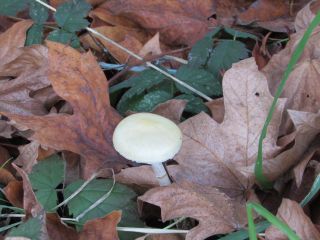Dreaming
The Trickster in Dreams
How dreams of frustration become opportunities for growth.
Posted November 29, 2023 Reviewed by Monica Vilhauer
Key points
- The trickster symbolizes the chaotic energy of unconscious potential.
- Dreams of misfortune and frustration can arise from conflicts with the trickster.
- Welcoming the trickster brings new psychological vitality and growth.

Why are some dreams so full of frustration and misfortune? It seems the dreaming imagination could focus on creating more experiences of magical wonder and ecstatic flying, but instead it repeatedly drops us into scenarios of random dysfunction and irritating difficulty. What purpose does this serve? The bothersome negativity of such dreams is hard to square with the idea of dreaming as a source of valuable psychological insight.
Before you give up on these dreams, let’s consider more closely the recurrent themes that seem so pointless:
- Absurdities: being naked in public, body parts falling off or not functioning.
- Misbehaviors: people or animals who act weirdly or can’t be controlled.
- Aggravations: endless problems with a task, nothing happens or works as it should.
- Instabilities: strange metamorphoses, things/people/scenes suddenly changing into something different.
As often happens in the study of dreams, what at first seems meaningless becomes, after a few moment’s reflection, much easier to understand. The key here is stepping outside the perspective of the dream-self so you can see the dream as a whole. It may help to share a dream like this with someone else, because they will naturally present you with a different and more holistic view.
What’s most important is escaping your limited perspective within the dream. Now that you are awake, you need not view it through those eyes; you are free to look at your dream-self as you might look at a character in a story or drama. This shift in perspective will diminish any lingering feelings of frustration. It may also reveal a bigger truth about why you experience these kinds of dreams: You have been playing a starring role in a slapstick comedy of the psyche. The only one not in on the joke is your dream-self.
The Symbolism of the Trickster
It helps to think of dreams like this as expressions of conflict with the trickster, a mythic figure who symbolizes, on one level, the unconscious potential in all of us for greater psychological growth and self-awareness. These gains are only possible, however, by welcoming and integrating into consciousness the disruptive energies it represents.
Tales and legends from all around the world include trickster figures: the mischievous Hermes of Greek mythology, the whimsical Loki of Norse mythology, the clever spider Anansi of West Africa, Hanuman the magic monkey of Hinduism, Coyote and Raven among Native American cultures, the Brownies and Leprechauns of Scottish and Irish legends, the Holy Fool of Russian lore, the clowns, fools, and fairies of Shakespeare’s plays, the Cat in the Hat of Dr. Seuss—the list goes on. The trickster is an elusive shape-shifter of animal-divine nature, a boundary-crosser par excellence, more powerful than humans in many ways and yet constantly caught up in ridiculous misadventures.
According to dream group leader Jeremy Taylor, “At one level, ‘trickster’ with his/her endless creativity and cleverness—combined with endless stupidity, foolishness, and self-destructiveness—is an archetypal mirror/metaphor of partial and always evolving human consciousness itself”(5).
Carl Jung, in his comments on Paul Radin’s classic The Trickster: A Study in Native American Mythology, links the trickster to the archetype of the shadow. He states: “The trickster is a collective shadow figure, a summation of all the inferior traits of character in individuals… In his clearest manifestations he is a faithful reflection of an absolutely undifferentiated human consciousness, corresponding to a psyche that has hardly left the animal level” (270, 260).
The cross-cultural evidence suggests that every human community has its own version of the trickster, its own symbolic way of expressing and honoring the restless, unruly forces of emergent growth within the unconscious. Wherever the trickster appears—in myths or movies, in dreams or fairy tales—the effect is a wildly destabilizing but ultimately beneficial shift of conscious awareness.
Laughing With the Trickster
Integrating the energies of the trickster is harder than it sounds. It requires a taming of the ego’s grandiosity and a humbling acceptance of the most foolish, disorderly, and annoying aspects of one’s own human nature. Humbling, but also liberating. Instead of expending so much energy fighting against the trickster, we learn to relax and laugh with it. Essential to nearly all trickster stories is humor. The antics of the trickster can be hilarious, and the comedy usually revolves around their amusingly chaotic effects on everyone around them, especially those who go too far in emphasizing strict order, authority, and control.
If you have a dream with relentless frustrations and misfortunes, ask yourself if it’s possible that you’re dealing (or failing to deal) with some aspect of the trickster. A dream need not have a specific trickster character present to include strong trickster energies. Following the interpretive insights of Jung and Taylor, consider if the most aggravating part of the dream reflects something within your psyche that has been ignored or rejected—perhaps an instinctual aspect of your animal nature? Or, possibly the light of your own inner wisdom? The trickster symbolizes both. To embrace the trickster’s energy is to embrace the fullness of human nature and potentiality, from the noblest heights to the most primitive depths.
References
Jung, C.G. (1980). "On the Psychology of the Trickster-Figure." In The Archetypes and the Collective Unconscious, pp. 255-274.
Taylor, J. (2011). Trickster's Many Roles in Myth, Dream, and the Evolution of Consciousness. San Rafael, CA: Dream Tree Press.




